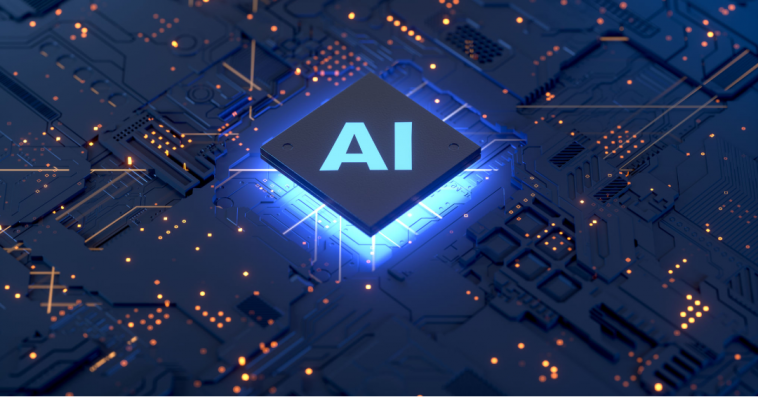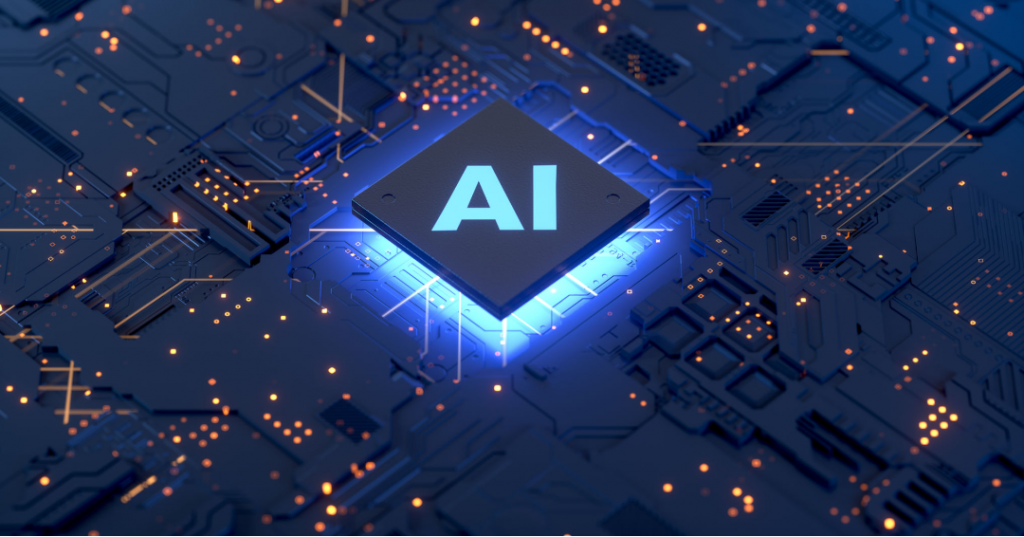Artificial Intelligence (AI) has rapidly evolved over the years, and one of its most exciting developments is generative AI. Generative AI is crucial in bringing remarkable breakthroughs to commonplace technology as the era of artificial intelligence ends. There are now several free AI tools available that can help you create amazing photos, words, music, films, and much more in a matter of seconds.
We have been astonished by Midjourney’s incredible powers and Adobe’s AI Generative Fill in Photoshop. But what is Generative AI exactly, and how is it promoting such a quick pace of innovation? Follow our in-depth explanation of generative AI to discover more.
What is Generative AI?
Generative AI refers to a subset of AI that involves creating models capable of generating new and original content, such as images, videos, text, and even music. It utilizes deep learning techniques to learn patterns from existing data and then generates new content that resembles the original.
Based on user input, or what we refer to as “prompts,” generative AI can produce a wide range of outputs.
The model can create novel combinations of texts that sound realistic if it has been trained on a lot of text. The output will be better the more data there is. You are more likely to receive a nuanced response if the dataset has been cleaned before training.
Similar to this, an AI model may conduct picture categorization and generation if it has been trained on a large corpus of photos including image tagging, captions, and numerous visual examples. A neural network is a sophisticated artificial intelligence system that has been built to learn from examples.
Having stated that there are various categories of generative AI models. These include Autoregressive models, Generative Pretrained Transformers (GPT), Variational Autoencoders (VAE), Generative Adversarial Networks (GAN), and many more. Below, we’ll briefly go through various generative models.
After the introduction of GPT-4/3.5 (ChatGPT), PaLM 2 (Google Bard), GPT-3 (DALL – E), LLaMA (Meta), Stable Diffusion, and others, GPT models have currently gained popularity. The Transformer architecture serves as the foundation for each of these user-friendly AI interfaces. Therefore, the major topics of this explainer will be GPT (Generative Pretrained Transformer) and generative AI.
Different Types of Generative AI Models:
Generative Adversarial Networks (GANs):
Generative Adversarial Networks, commonly referred to as GANs, are a class of deep learning models that have gained significant attention in the field of artificial intelligence. These are designed to generate new and original data that closely resembles a given training dataset.
They are composed of two main components:
Generator:
It is used to generate content.
Discriminator:
It is used t evaluate the generated content.
Basically, the goal is to compete for two neural networks to produce outcomes that replicate real data. The majority of GAN-based model applications have been in the creation of images.
Variational autoencoder (VAE):
A generative model known as a variational autoencoder (VAE) combines the ideas of autoencoders and variational inference. VAEs are neural network-based models that acquire the underlying latent space representation of the input data in order to learn to produce new data.
They are now quite well-known in the deep learning community and have been effectively used in many other fields, including the production of text and images. They consist of two main components:
An Encoder:
The encoder takes in the input data and maps it to a lower-dimensional latent space representation. The latent space captures the essential features and structure of the input data.
Decoder:
The decoder then takes a sample from the latent space and reconstructs the original input data.
VAEs have found applications in various domains, including image generation, text generation, and data compression.
Autoregressive models:
The foundation of autoregressive models is the notion that every data point in a series depends on all of its prior observations. They assume that the past observations can be used to simulate the conditional probability distribution of the present observation.
The generation of sequential data and the capture of temporal interdependence are thus made possible by autoregressive models. Following that, there are Normalising Flows and Energy-based Models. Finally, we will go into detail below regarding the well-known Transformer-based models.
Generative Pretrained Transformer (GPT) Model:
Recurrent neural networks (RNNs) and convolutional neural networks (CNNs), such as GANs and VAEs, were widely utilized for generative AI prior to the introduction of the Transformer design. The ground-breaking publication “Attention is all you need” (Vaswani, Uszkoreit, et al., 2017), written by Google researchers, helped to advance the field of generative AI and create a large language model (LLM).
The Transformer architecture was subsequently implemented by Google in the BERT model (Bidirectional Encoder Representations from Transformers), which was made available in 2018. At the same time, OpenAI unveiled its initial Transformer-based GPT-1 model.
What, then, was the Transformer architecture’s key component that made it so popular with generative AI? The paper introduced self-attention, as its title properly indicates, which was lacking in earlier neural network topologies. This basically indicates that the Transformer approach, which is used, predicts the following word in a phrase. To comprehend the context and build a relationship between words, it pays great attention to nearby words.
The Transformer learns the language reasonably through this procedure, and he or she uses this comprehension to accurately predict the following word. The Attention Mechanism refers to the entire process.
The model is merely copying random words based on probabilistic decisions and patterns it has learned, which is why LLMs are mockingly referred to as Stochastic Parrots (Bender, Gebru, et al., 2021). It has no real comprehension of the text and does not choose the subsequent word logically.
Before ever implementing the attention mechanism, the model has already been trained on a significant amount of text input, which is what the phrase “pretrained” in GPT refers to. Pre-training the data helps it understand the meaning of sentence structure as well as trends, facts, and phrases. It enables the model to get a thorough understanding of language syntax.
The Approach to Generative AI by Google and OpenAI:
Google:
In Google Bard and ChatGPT, respectively, Google and OpenAI both use Transformer-based models. There are some significant changes in the strategy, though. With a bidirectional encoder (self-attention mechanism and a feed-forward neural network), Google’s most recent PaLM 2 model takes all nearby words into account.
Basically, it attempts to comprehend the sentence’s context before generating every word at once. The strategy used by Google is to essentially forecast the words that are absent in a context.
OpenAI:
The Transformer architecture is used by OpenAI’s ChatGPT, in contrast, to anticipate the following word in a series from left to right. It is a unidirectional model made to produce sentences that make sense. It keeps making predictions until a whole sentence or paragraph is produced. Perhaps this explains why Google Bard can produce texts much more quickly than ChatGPT.
However, in order to provide Generative AI frontends, both models rely on the Transformer architecture at their core.
Applications of Generative AI:
Generative AI has numerous applications across different industries. One of its most well-known uses is in computer graphics, where it can provide lifelike visuals, animations, and special effects. For example, DALL-E2 creates realistic images from the text descriptions.
It is also used in the gaming industry to generate lifelike characters and immersive virtual worlds.
In the healthcare sector, generative AI plays a vital role in medical imaging, where it can generate high-resolution images from low-resolution inputs, aiding in the diagnosis of diseases. It is also used to simulate the effects of potential drugs and optimize drug discovery processes.
Generative AI has found its way into the fashion industry as well. It can generate unique designs, patterns, and even entire collections, providing designers with endless creative possibilities. Additionally, it assists in personalized marketing by generating targeted advertisements and recommendations based on user preferences.
Challenges and Ethical Considerations:
While generative AI holds tremendous potential, it also presents challenges and ethical considerations. The potential abuse of AI-generated content, such as deep fakes, which may be used to propagate false information or fool people, is one of the main worries. Robust ethical frameworks and regulations need to be developed to address these issues and protect individuals’ rights.
Another challenge is the bias present in the training data, which can lead to biased generative outputs. Efforts must be made to ensure diversity and fairness in the datasets used to train generative AI models, promoting inclusivity and avoiding the perpetuation of harmful stereotypes.
Future Possibilities:
The future of generative AI holds exciting possibilities. As technology continues to advance, we can expect even more realistic and sophisticated generative models. This might result in improvements in virtual reality, where generative AI can produce realistic-looking landscapes that are completely immersive.
Additionally, generative AI has the ability to completely change how the material is produced and distributed. It can automate the production of personalized content tailored to individual preferences, enhancing user experiences across various platforms. This includes generating personalized news articles, advertisements, and entertainment content that aligns with specific user interests.
Conclusion:
Generative AI is a groundbreaking technology that empowers machines to generate original and creative content. Its applications span various industries, from computer graphics and healthcare to fashion and music. To ensure responsible and unbiased use, there are obstacles to be overcome and ethical issues to take into account, just like with any powerful technology.
In conclusion, generative AI opens up new avenues for human creativity and innovation. It gives us the freedom to explore uncharted ground and goes beyond what is feasible.
Striking a balance between utilizing generative AI’s potential and protecting against its potential hazards is essential as we move forward.





